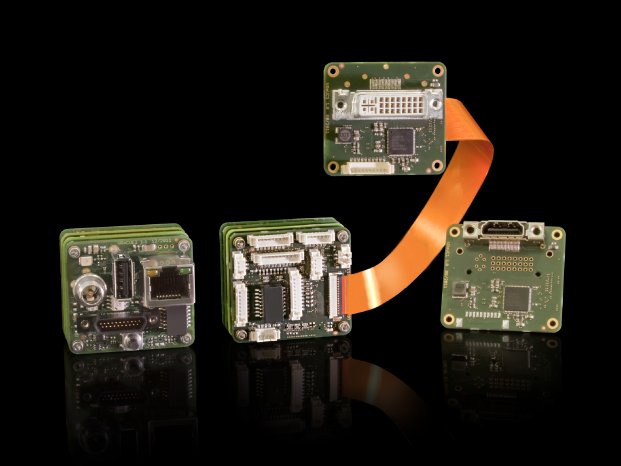The new VRmDC-14 camera model is equipped with a 1/3" Sony ICX445 CCD sensor with progressive scan interline transfer that has a resolution of 1.25 megapixels (1296 x 966 pixels). The camera produces up to 22 images per second.
With the VRmDFC-22 and the VRmDFC-42 VRmagic presents two cameras with a combination of DaVinci™ dual core processor, FPGA and CMOS sensors with global shutter. The 2/3" CMV 2000 sensor from CMOSIS has a resolution of 2.2 megapixels (2048 x 1088) and produces 28 images per second. The square CMV 4000 sensor offers a 4.2 megapixel resolution (2048 x 2048) with an update rate of 15 fps.
The new camera models are available in monochrome and color, as a board-level version or in high-quality aluminum housing with C-mount.
"Our range of intelligent cameras is completed with the high-resolution global shutter and now covers resolutions from 0.36 to 4.2 megapixels," explains Oliver Menken, Sales & Marketing Manager at VRmagic Imaging. "Combined with the image-processing capabilities of the DaVinci™ dual core processors, with this we offer extremely powerful components for applications where the evaluation is to be completed directly on the camera without additional computers."
OEM miniature connectors with optional DVI or HDMI output
For the OEM variants of the intelligent cameras VRmagic now also offers a back end with Picoblade™ miniature connectors for all supported interfaces. A PCB with DVI or HDMI output can be additionally connected to the cameras via the Picoblade™ back end. The external board is connected with the PCB stack via a flexible printed circuit cable (FPC). Synchronized image recording and display is possible via DVI or HDMI up to 60 Hz.
Freely programmable image processing on the dual core chip
All intelligent cameras by VRmagic are equipped with the DaVinci™ processor from Texas Instruments, featuring a 300 MHz ARM9 processor running the Linux operating system, and a 600 MHz DSP with 4800 MIPs that is entirely available for image processing tasks. The cameras are equipped with 256 MB RAM and a 512 MB flash module. The supported interfaces include Ethernet, USB 2.0 Host, RS232 and General Purpose I/O, Analog Video Output as well as optionally digital Video-Output and Audio interface. With a standard Debian Linux operating system, the intelligent camera provides developers with a convenient platform for programming their own applications and transferring them to the camera by means of cross-compilers. Host system and camera have the same API.

